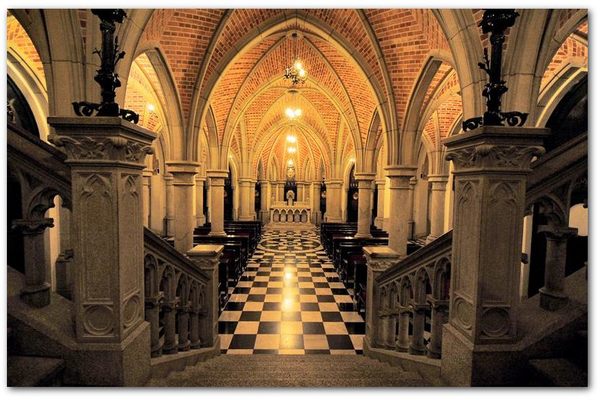About
Venture beneath the unassuming facade of this small town's church, and a crypt harboring the mummified remains of the enigmatic Luftg’selchter Pfarrer (“Air-Dried Priest”) awaits discovery. This peculiar figure was unearthed in 1800, gaining written mention in 1830. Transforming into an early tourist attraction, the crypt enticed visitors with flyers dating back to 1850. In 1900, a coffin lid equipped with a viewing window was added, enabling illustrious guests like Archduke Franz Salvator to catch a glimpse of this preserved ecclesiastic.
Believed to be the body of Father Franz Xaver Sidler von Rosenegg (who lived from 1709 to 1746), the 13th child of Gottlieb and Elisabeth Maria Sidler von Rosenegg, the mummy's tale intertwines with the rich tapestry of his life. A member of the Waldhausen monastery choir in his youth and ordained as a priest at the age of 23, Franz Xaver became the parish vicar at St. Thomas am Blasenstein in 1743 and served until his untimely demise at 37 in 1746, marked by a swift burial due to prevalent illnesses and death plaguing the town.
The mystery of Franz Xaver's natural mummification has fueled various theories, ranging from tannic acid and double-chloride mercury to poisons, drought (earning him the moniker "air-dried priest"), radiation, or even the miraculous. Initially shrouded in uncertainty, his cause of death became clearer after extensive studies revealed that the vicar suffered from pulmonary tuberculosis, with an acute hemorrhage deemed the ultimate culprit.
Journey into the crypt's shadows and explore the inexplicable legacy of the Air-Dried Priest, where the thin veil between science and wonder invites contemplation of a life preserved in eternal mystery.
Related Tags
Know Before You Go
Entry into the church is free, but to open the door to visit the vicar is €2 per group. Guided tours are by appointment only. All information on the display boards in the crypt is mostly in German.
Community Contributors
Added By
Published
March 6, 2024


































